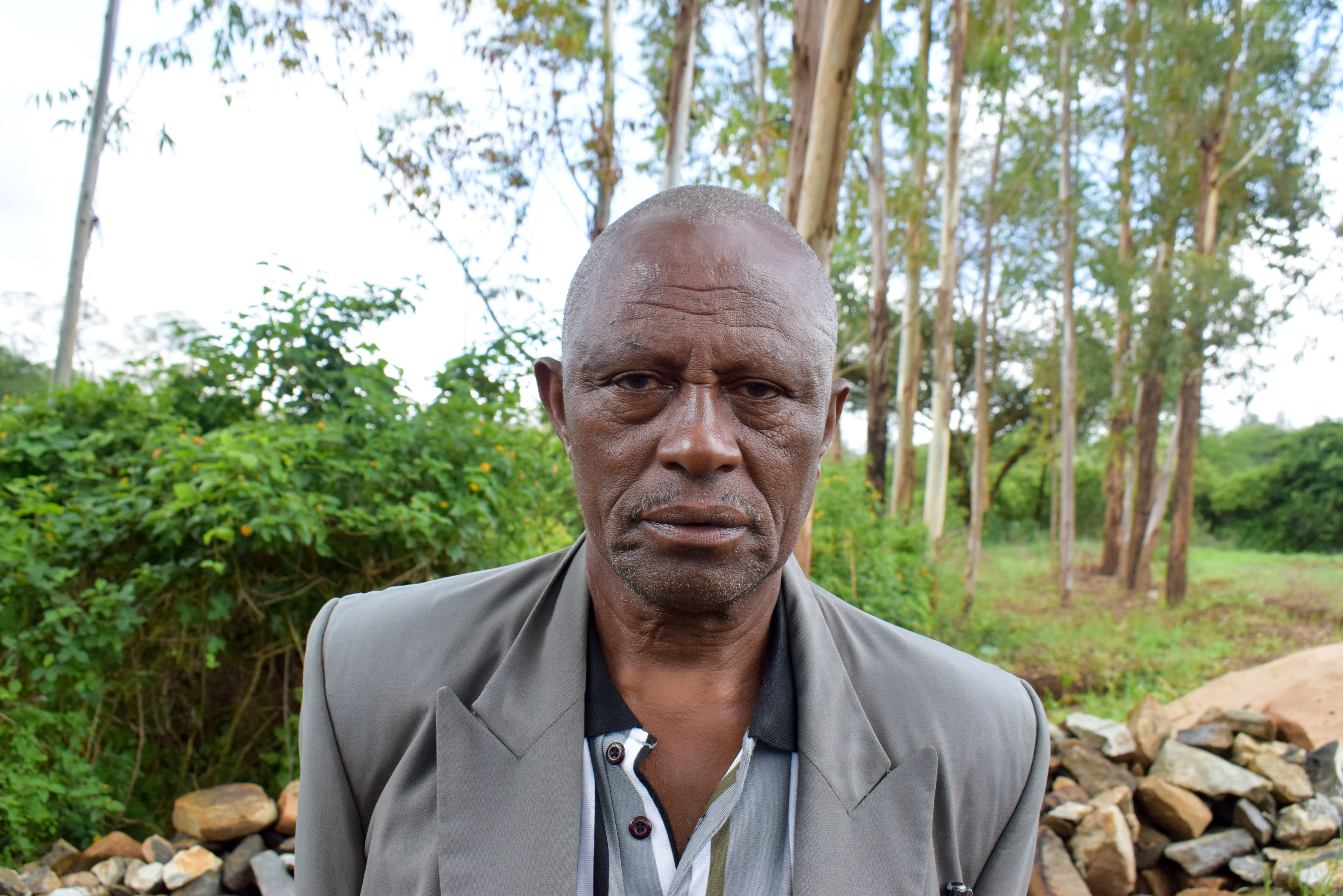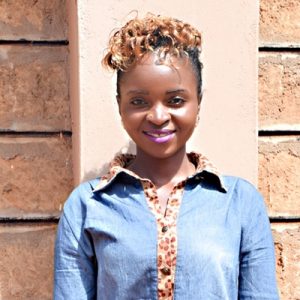We are supporting Muka Self-Help Group in their efforts to address water and food scarcity for the more than 8,000 people living in Muluti Community. We plan to install their first sand dam and hand-dug well system to bring water nearby.
This type of intervention helps people improve their lives. Unpredictable rainfall patterns have made it impossible to guarantee water for communities all year round, as most rivers in Southeastern Kenya are seasonal. Sand dams harvest rainwater where it falls, making it available to the community until their next rain season.
Because at this very moment, community members are having to travel three kilometers just to find water at a sandy, seasonal river. The water fetched is not even safe for drinking. At the time of our visit, this river was flooded with dirty water after recent downpours. But during the dry season, people have to dig very deep scoop holes in the sand until they hit water. These are very dangerous as people can trip and fall into the hole.
People drink this water because there's no other alternative and often suffer from waterborne illnesses from doing so.
We interviewed 65-year-old Nicholas Kisiola about how this has affected his life:
I have been born here and we have been experiencing water challenges over the past thirty years. Rivers here are seasonal and they often dry after the rains have ceased. In addition, we experience rainfall which is very unreliable. Once the rivers dry, the community members resolve to dig scoop holes in order to get water for consumption in their homes.

This water is usually open and exposed to various contaminants such as soil erosion, animal excretion, farming chemicals, among other pathogens. We are used to drinking this water directly as it is without treating it. Often, we assume it is expensive to treat water and also it is a habit for us to drink the water as it is.
This results in diseases such as typhoid, cholera, and diarrhea. Once, I drank water then found residues of worms but it is normal for us. In addition, the distance covered in order to fetch water is too far and it is very exhausting."
Welcome to the Community
Muluti Village is located 28 kilometers from Tawa Town, where we had slept the previous night. The dirt roads leading to the village were very difficult to traverse due to recent rains. The car skid around a couple of times as a result of the slippery mud. It was a cold and chilly morning when we arrived.
This is an expansive rural area that's peaceful. Households are spread out over the hills. Some homesteads live with the entire extended family there too, where they subdivide the land into different portions so that each family can fit and build their own home on their allocated land. This is the most preferred lifestyle so that old parents can still be taken care of by their children.
There are 8,050 people living in this region.
Agricultural activities are very common in this community as farming is their primary source of income. During the rainy seasons, the community members get better yields that sustain their families and produce a surplus to be sold in the local market. Casual labor jobs, motorbike businesses, and taxi businesses are among the common careers that young adults engage in.
What we can do:
New Knowledge
We will hold hygiene and sanitation training sessions with Muka SHG, which are also open to non-members. These will teach about important hygiene practices and daily habits to establish in the community at the personal and household levels. Taking good care of self and environment will make for a healthy community.
Baseline Sanitation Facility Coverage:
Latrines 80%
Handwashing Stations 0%
Clotheslines 90%
Dish Racks 10%
Bathing Area 99%
Animal Enclosure 90%
Proper Garbage Disposal 50%
These community members attempt to practice good hygiene and sanitation but the inadequate water supply has been a big hindrance. They do not treat their water, which is very dangerous to their health. Their latrines are rarely washed, they do not dispose of their garbage safely, handwashing habits are unheard of in this area, and compound hygiene is highly neglected. General training of hygiene and sanitation will be very advantageous to this group.
"It is a very rare spectacle for me to clean the latrine. The water I attain from the river is often reserved for important duties such as cooking, drinking, bathing and washing clothes. We fetch water very far and often, washing the latrines is not a priority," shared Mrs. Lydia Ndilo.
"At times when the water is very scarce, we can go for days without taking a bath. My grandchildren miss school occasionally as they do not want to wear dirty clothes. When the latrines are not washed for long we use ash to reduce the odor."
Sand Dam
Building this sand dam at a spot on Tawa River will bring water closer to hundreds of people. After the community picked the spot, our technical team went in and proved the viability by finding a good foundation of bedrock. Now, our engineers are busy drawing up the blueprints. We estimate the dam will be 62.2 meters long and 5 meters high.
We are unified with this community to address the water shortage. As more sand dams are built, the environment will continue to transform. As the sand dams mature and build up more sand, the water tables will rise. Along with these sand dams, hand-dug wells (check out the hand-dug well being installed next to this dam) will be installed to give locals a good, safe way to access that water.
With these projects, clean water will be brought closer to hundreds of people in Muluti Village of Kenya.

 Sand Dam
Sand Dam
 Rehabilitation Project
Rehabilitation Project



































